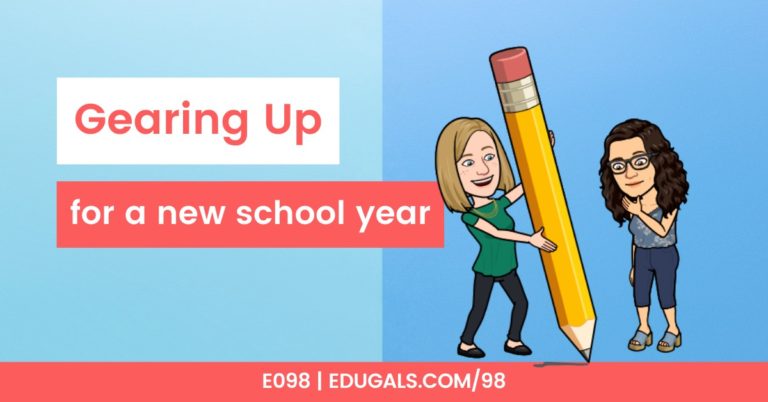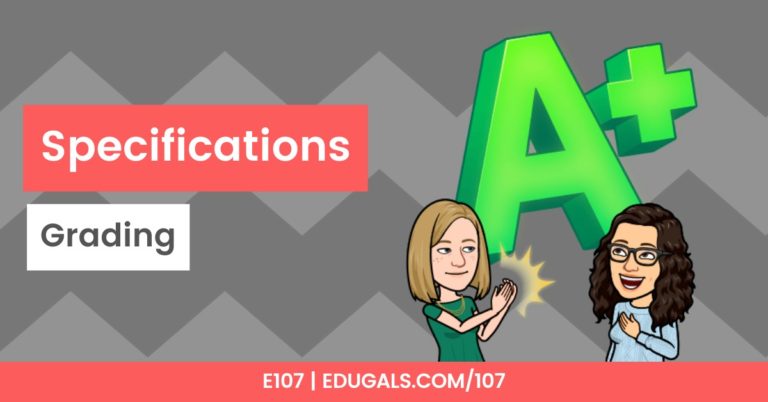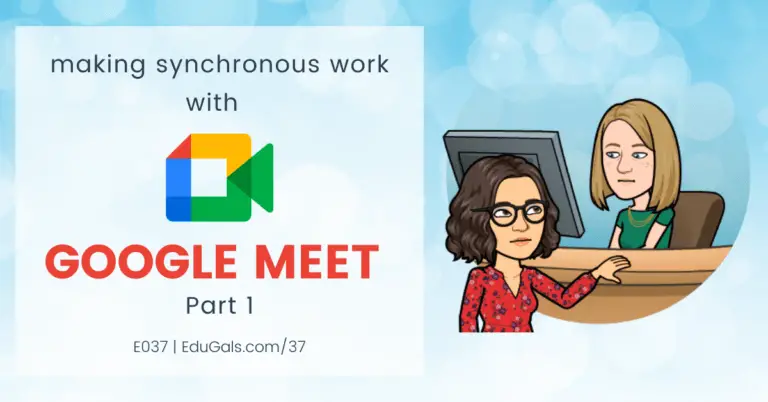[podcast_subscribe id=”7428″]
In this episode, we are diving into Chapter 1 of “Why Don’t Students Like School?” by Daniel Willingham. We will discuss some of our thoughts and reactions to this chapter, and how we can use this resource in our classrooms.
If you like what you hear, we would love it if you could share this episode with a colleague or friend. And make sure you subscribe so that you don’t miss out on any new content! And consider supporting the show by buying us a coffee or two!
We would love to hear from you – leave a comment on our website OR check out our FLIP!

Show Notes
This week, we are getting into a book! The book we have chosen is “Why Don’t Students Like School?” by Daniel Willingham. Today we will really just get into Chapter 1, because this book is such a wealth of information.
We chose this book because of Rachel’s love for all things cognitive science. She loves to get nerdy about this type of stuff, and tends to read quite a bit. This particular resource has been on her wish list for quite some time, so she decided to purchase it at last!
Who is Daniel Willingham?
Before we get right to it, it’s worth sharing a bit about the author. Daniel Willingham is a cognitive scientist who explores how the mind works, and he presents this info in a way that gets teachers and educators thinking about how we teacher and how we can support students.
Willingham is a professor of psychology at the University of Virginia, starting in and around 2000. Quite a bit of his research is about education and how to apply cognitive psychology in education. He has written for a wide variety of magazines, journals, etc. as well as other books too. He writes quite a bit about the science of reading, how we can use our knowledge of the brain to better support kids, and also about how to support and raise our own children who read.
Chapter Structure
The title of Chapter 1 is “Why Don’t Students Like School?” To be honest, Katie was a bit annoyed at first because it’s also the title of the book, and she just wanted the answer right away, instead of another question. That being said, the way that the book and each chapter are structured really is helpful.
Each chapter begins with an overlying question and answer, followed by a guiding principle. It gives you an overview of what the learning goals is, what he will talk about in the chapter, and then some information that goes into the cognitive science behind it all.
The best part of each chapter, though, is that every single chapter ends with implications for the classroom. Not only does Willingham present and share the theories, he also puts that theory into simple and practical terms for teachers to then take these ideas into their classrooms.
Chapter 1 Learning
The guiding principle of chapter 1 points out that people are naturally curious, but we are not naturally good thinkers.

It is an interesting way to start off a book! It first had us feeling a little defensive, because we’d like to think we are pretty good thinkers. As he continues on in his explanation, and defines what thinking is, however, we quickly come to realize that we are not actually good thinkers, and tend to avoid it as much as possible!
He points out the number of things that our brains and bodies do completely on autopilot, as a result of learned behaviours. We have learned how to use our body’s mechanisms to the point where we don’t have to think about them anymore – much of what we do in life does not require thinking.
Instead, much of it is a result of memory. These actions that are on autopilot, such as walking into a new space, looking around, and immediately labelling items and recognizing things around us. We just know that what we are seeing is grass, and that the grass is green – we don’t need to think about it. Essentially, we have trained our visual and sensory systems to automatically recognize the things around us, removing the need to actively think about what is around us.
Once we have stored information about how to identify things, where steps are, how to walk, colours, etc. we no longer have to think about these things unless we have to.
Willingham also brings up the fact that human brains are not really that great at thinking overall. What we do well is navigating our environment, our sight, our movement, etc. When we look at the development of AI and robots, etc. a lot of their strengths are more calculation based. This thinking is harder for humans.
On the other hand, it has taken a lot longer to develop self-driving cars or robots that have to navigate the spaces around them, and respond to obstacles, moving objects, etc.
Human brains are wired to interact with our environment.
What is thinking?
The author then goes on to define thinking as taking information from our environment and our long-term memory, and bringing this together with information from our environment in our working memory, and combining them in new ways. Only when we are combining these in new ways are we actually thinkin. Types of data stored in our long-term memory can be facts, things we know, types of knowledge about procedures, strategies and ways to solve problems.
He takes us through some of these processes through the use of exercises and/or puzzles. It’s a great way to engage the reader with different problems. He provides solutions, and then follows that up with a similar, but different problem. With new knowledge, we no longer have to think very hard about how to solve these new problems.
He also presented these problems in different ways to really get the reader to recognize the obstacles that exist, and when problems are too overwhelming for the limited space in your working memory. There was such a clear difference between the problems presented that he suggested more people would give up on before solving, and we also gave up as well! These problems were too overwhelming with text, and it felt like we had to reread them a bunch of times in order to even begin to solve the problem!

Through this process, he really had us recognizing as educators how word problems, tasks, etc. can be overwhelming to our students, and why they may be tempted to shut down when faced with that situation.
He stresses that we need to really grab hold of, and remember, that we are naturally curious beings. But we need to present problems that are challenging enough to want to engage, but not so challenging that you can’t see progress, solve the problem, or it’s so much higher than our skill level that we just can’t focus on it long enough to solve it.
This need to balance difficulty of problem, balance of skills, etc. connects well with Peter Liljedahl’s “Building Thinking Classrooms in Mathematics,” where he talks about doing a step-wise kind of progression in terms of the problems for students to solve. He stresses the importance of keeping students in an area of flow; you don’t want it to be too easy that students get bored, but you also don’t want it to be so difficult that students get frustrated. Willingham argues the same thing here in his book.
We also really liked how he mentions at one point that it is helpful it teachers can differentiate work and problems based on the abilities of the students, allowing more students to engage in the classroom. This had us directly thinking about mastery classrooms and meeting students where they are at, building confidence and engagement to continue to motivate them to further their skills and learning.
If we are always teaching above the skill level of our students, it will become very frustrating if students don’t have the skills and problem solving to be able to complete the work.
Importance of Knowledge
One thing that he stresses, which is important, particularly since we always talk about innovative teaching practices, etc. is the role of knowledge and required facts or procedures. We need knowledge in our long-term memories in order to be able to build our skills. If students start to fall behind at grade 3 or 4, then that gap in background knowledge will continue to grow as they get older UNLESS we meet students where they are at and build skills and knowledge from there. It’s extremely difficult to engage in inquiry-based learning and project-based learning without the long-term memory information.
Willingham also mentions a specific example about travel and the difficulties and exhaustion as a result of navigating foreign languages and cultures. Now instead of travel, imaging the English language learners that are still learning English while also sitting in your content course. The cognitive load on these students to interact, communicate, and try to understand and take in all of this knowledge, the language on the walls and in your classrooms, the hallways, etc. is exhausting. Plus, it doesn’t end when the bells end; many students go out and help their families run errands and act as an interpreter for their parents. It is so challenging and exhausting to interact 24/7 in a language that is not your first, and that you are still learning.
It’s great to give the reader something that they can clearly imagine with this travel example, but it’s even more important to think about the learners in our classrooms that live this on a daily basis, every single day, so that we can better understand how to support our students. It’s important that we lessen this cognitive load so that they can engage in learning and continue to acquire knowledge and skills so that they can be successful.
Implications for the classroom
At the end of each chapter, Willinham provides a short summary followed by strategies or implications for the classroom.

- Be sure there are problems to be solved
- By problems, he means cognitive or thinking work. We need to engage our students to continue their learning – something that they can dig into and examine or think about in class.
- Respect students’ cognitive limits
- This one involves asking if our students have the necessary background knowledge, and if not, providing them with the knowledge they will need to engage in the problem
- Cognitive overload may be caused by: multi-step instructions, lists of unconnected thoughts, chains of logics that are more than 2-3 steps long, and application of a just learned concept to new material
- Solutions: slow down the pace, make sure all instructions are written as well; provide a visual reminder of new information
- Clarify problems to be solved
- Think: backward planning; come up with the problems or questions, then determine required background knowledge to support that question and embed that into instruction
- Reconsider when to puzzle students
- Foster curiosity, but ensure they have enough background knowledge to engage once that initial spark has faded
- Accept and act on variation in student preparation
- Simply: remind yourself that students come from different lived experiences, different living situations, and consider how this can impact their self-confidence and willingness to engage in school
- Don’t make problems way beyond the ability of your students – it will only further feed into any self-perceptions of being a bad learner, and lead to further disengagement
- Change the pace
- If you notice you’ve lost their attention, change it up! Get students moving and thinking in a different way
- Keep a diary
- Write about what works, what doesn’t, and changes you want to make. While we all would love to have perfect memories, you’re likely to forget it if you don’t write it down!





